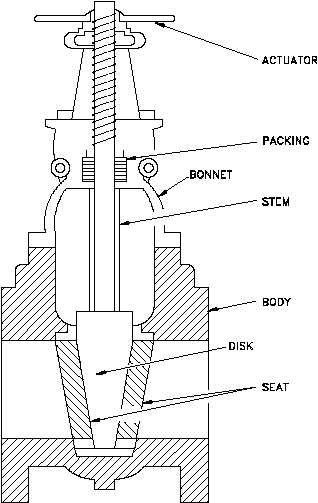VALVE FUNCTIONS AND BASIC PARTS
DOE-HDBK-1018/2-93
Valves
Valve Body
The body, sometimes called the shell, is the primary pressure boundary of a valve. It serves as
the principal element of a valve assembly because it is the framework that holds everything
together.
The body, the first pressure boundary of a valve, resists fluid pressure loads from connecting
piping. It receives inlet and outlet piping through threaded, bolted, or welded joints.
Valve bodies are cast or forged into a
Figure 1 Basic Parts of a Valve
variety of shapes. Although a sphere
or a cylinder would theoretically be
the most economical shape to resist
fluid pressure when a valve is open,
there are many other considerations.
For example, many valves require a
partition across the valve body to
support the seat opening, which is the
throttling orifice.
With the valve
closed, loading on the body is
difficult to determine. The valve end
connections also distort loads on a
simple sphere and more complicated
shapes.
Ease of manufacture,
assembly, and costs are additional
important considerations. Hence, the
basic form of a valve body typically
is not spherical, but ranges from
simple block shapes to highly
complex shapes in which the bonnet,
a removable piece to make assembly
possible, forms part of the pressure-
resisting body.
Narrowing of the fluid passage
(venturi effect) is also a common
method for reducing the overall size
and cost of a valve.
In other
instances, large ends are added to the
valve for connection into a larger
line.
ME-04
Rev. 0
Page 2

